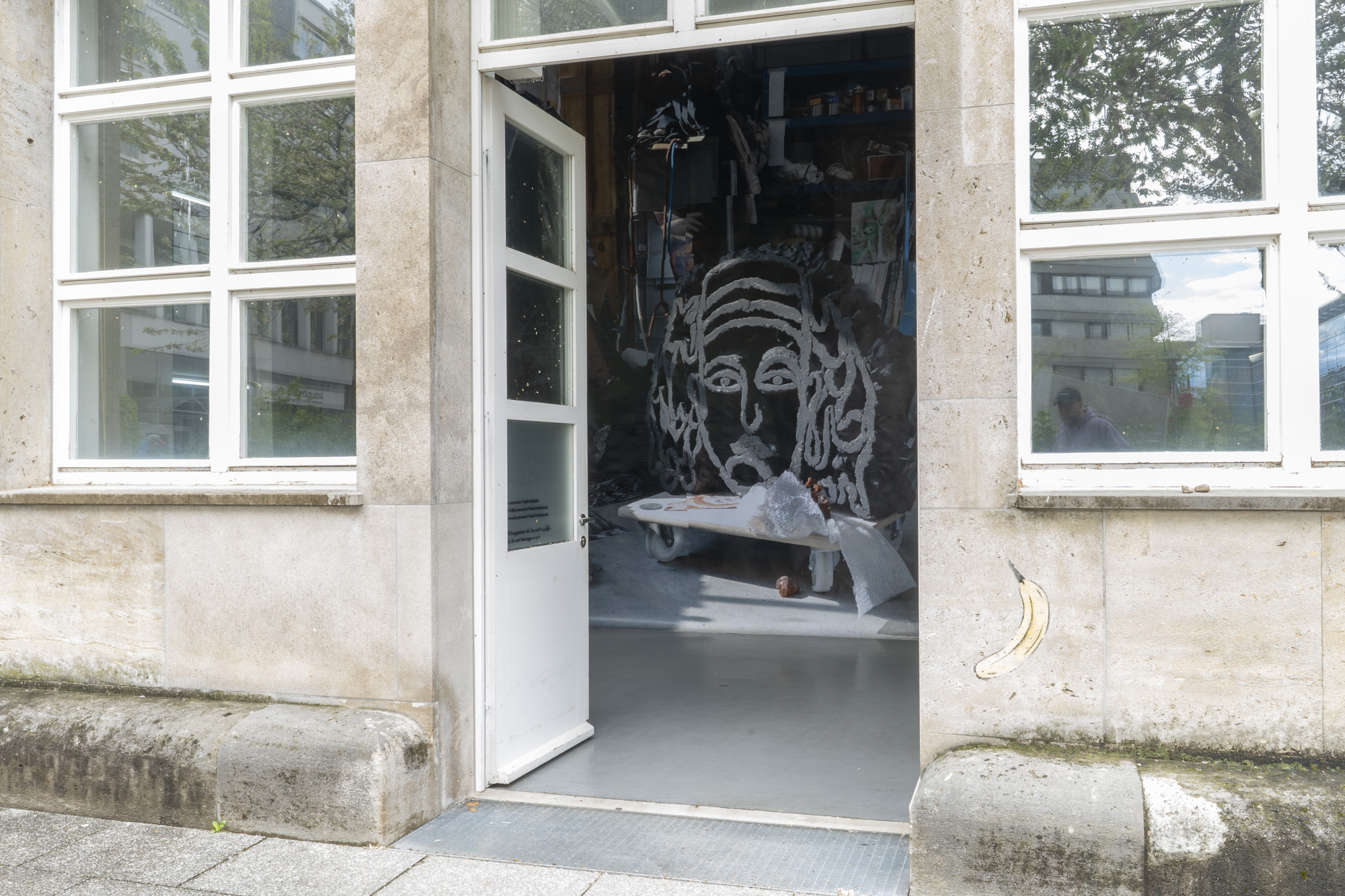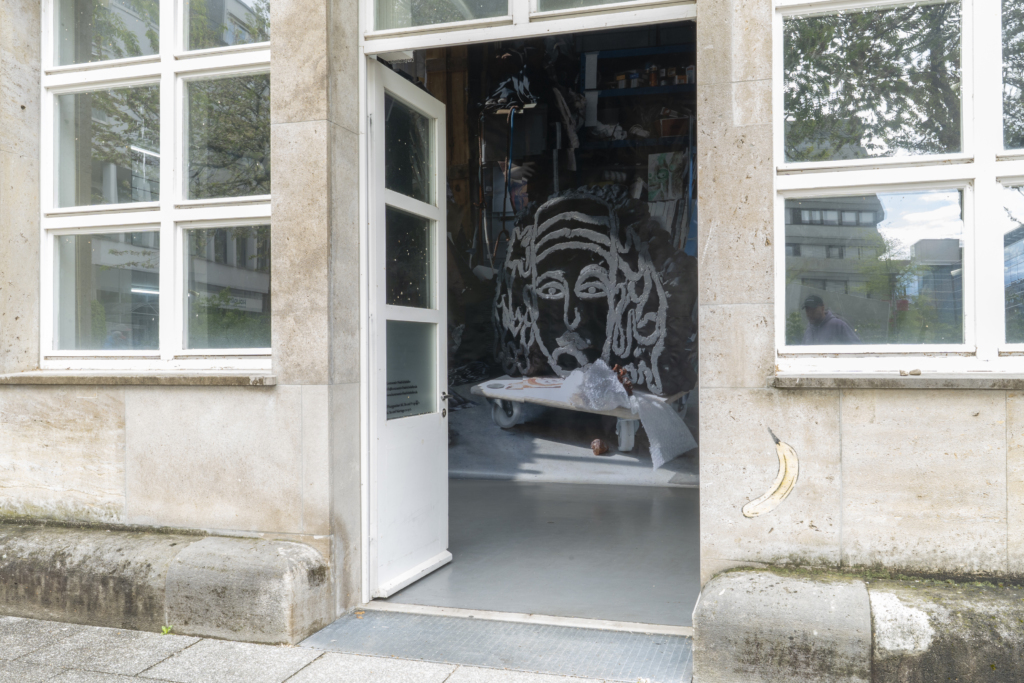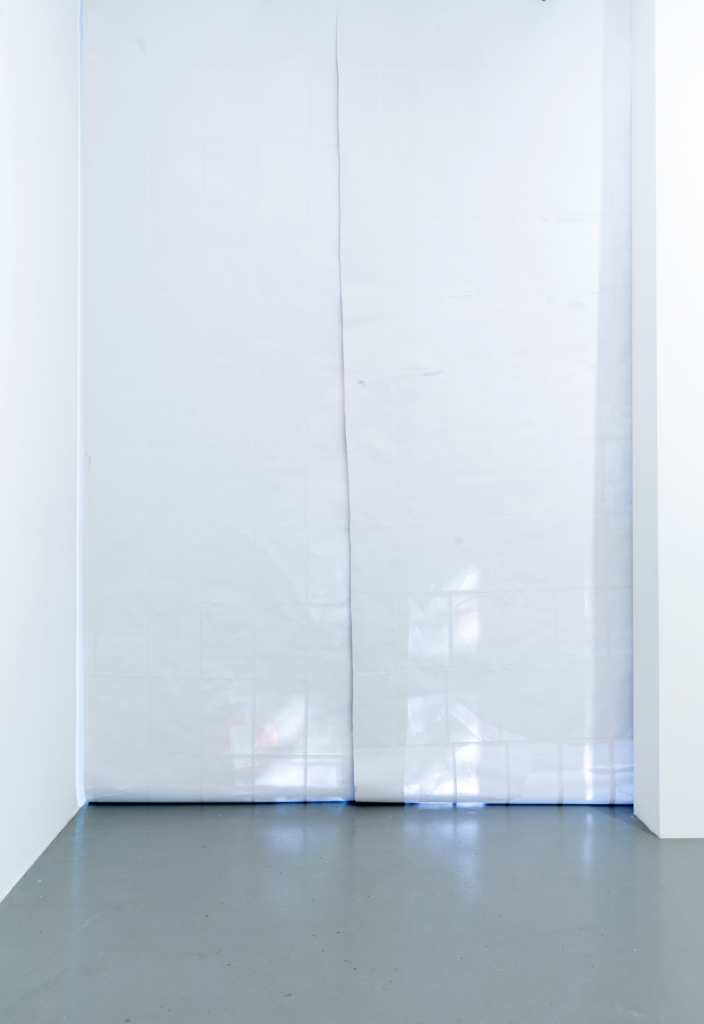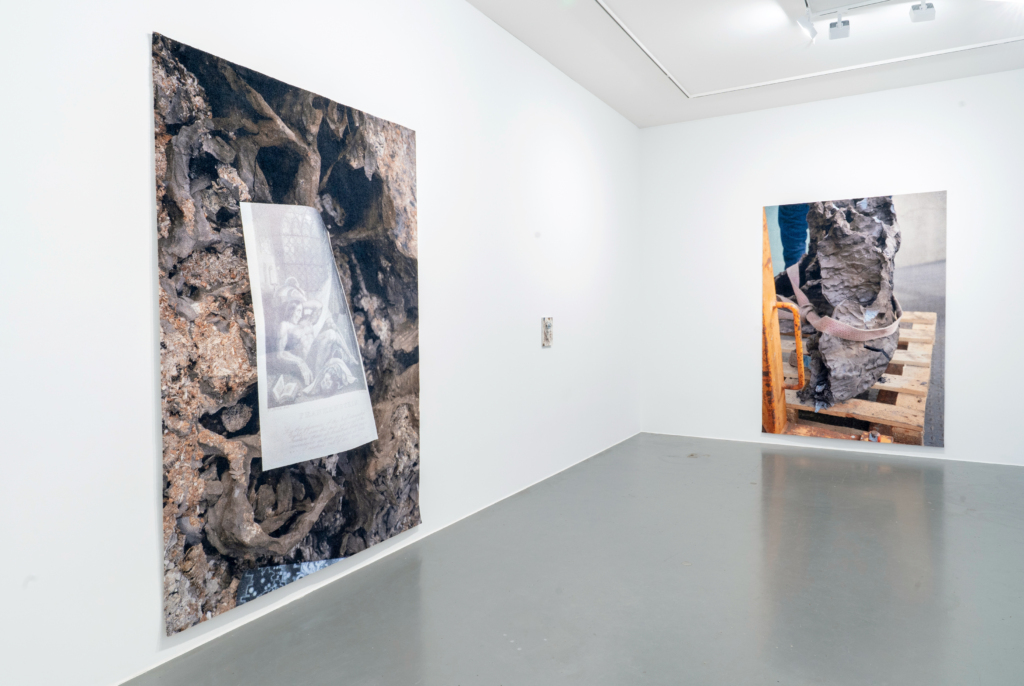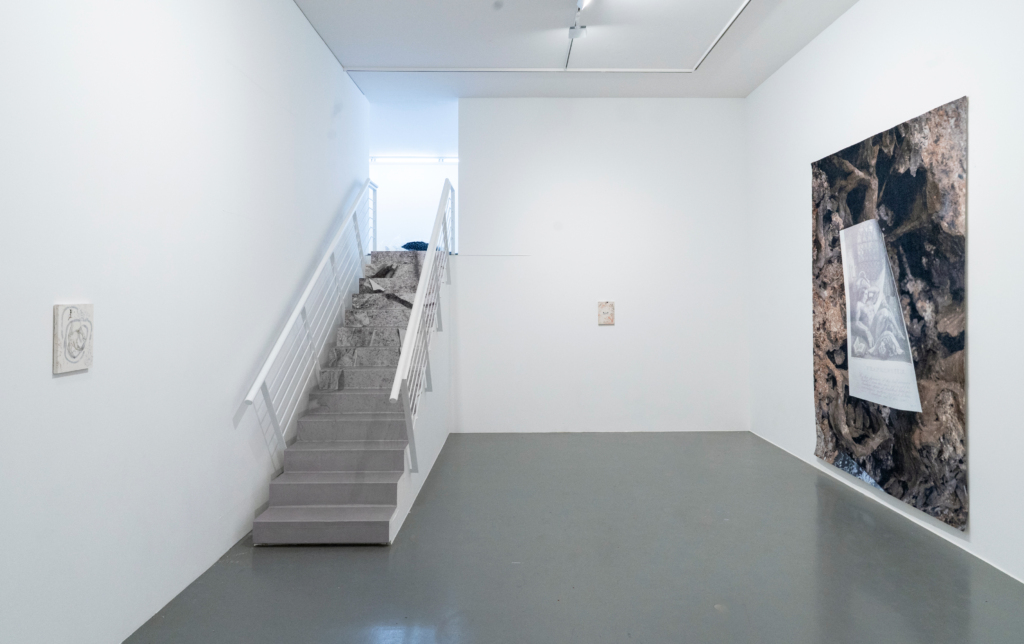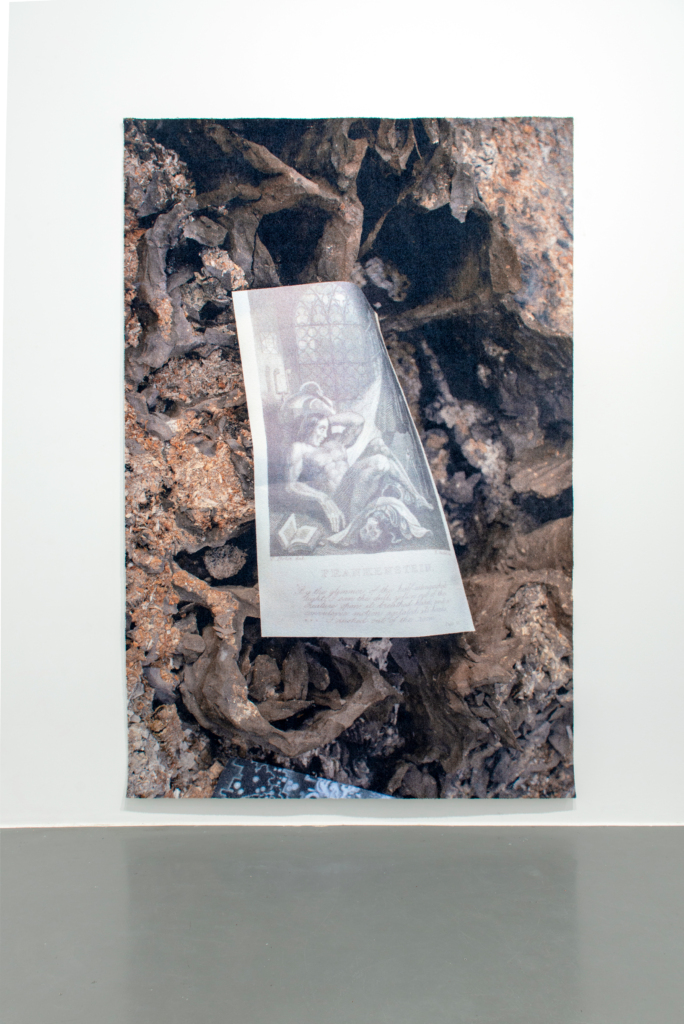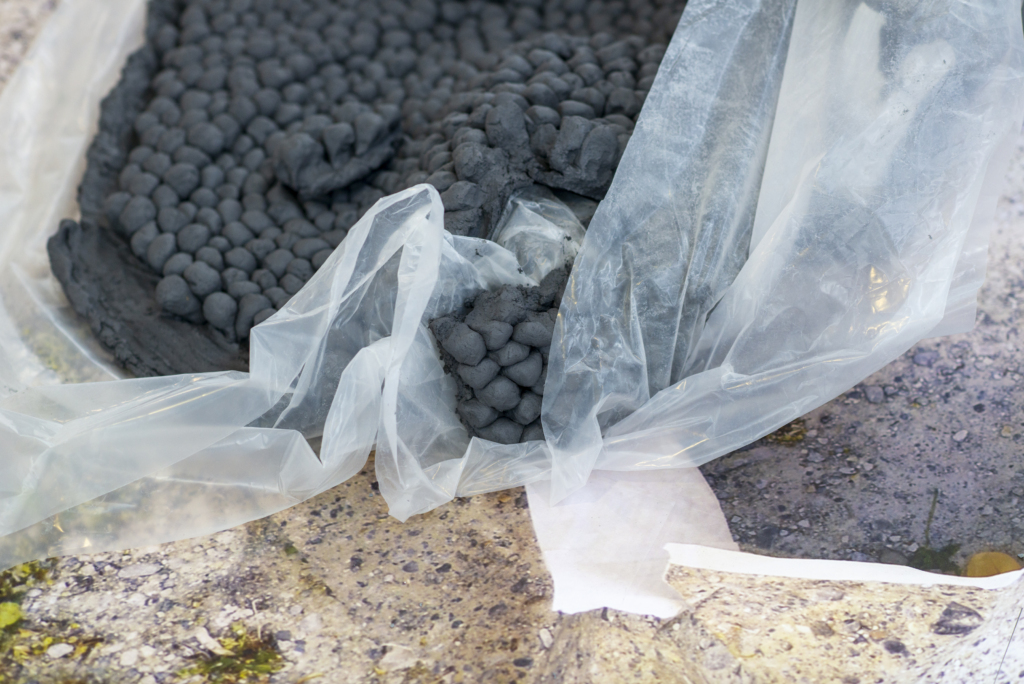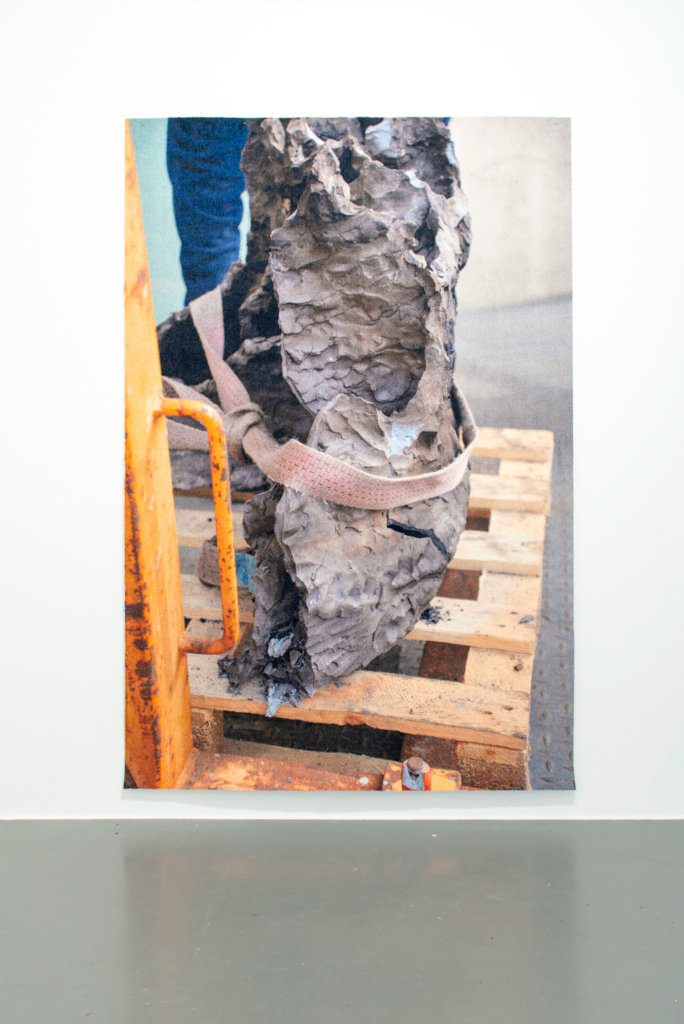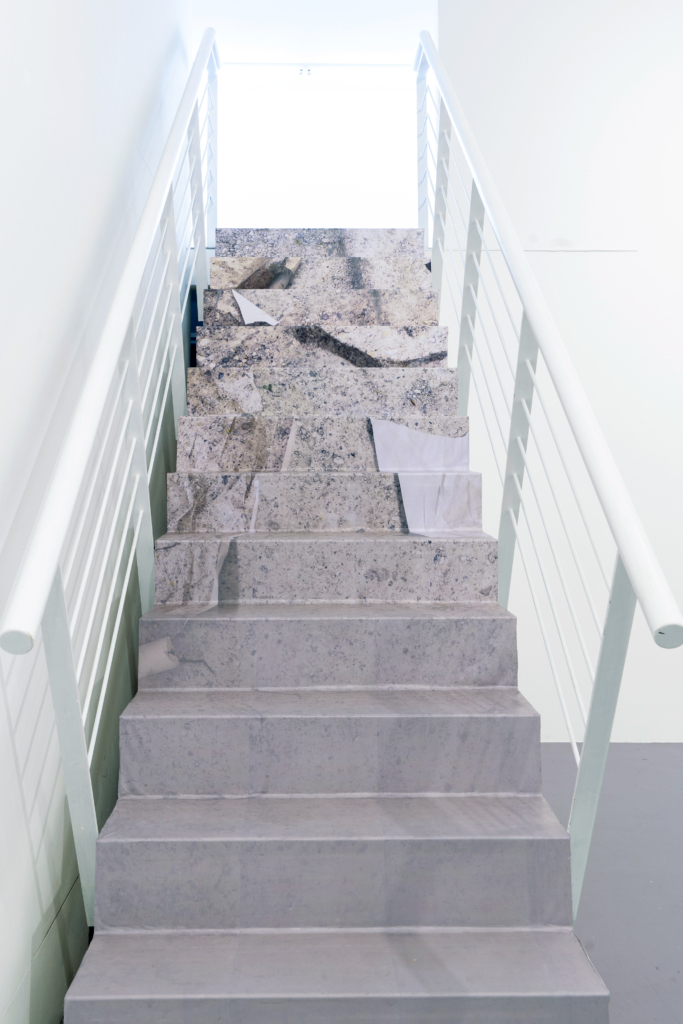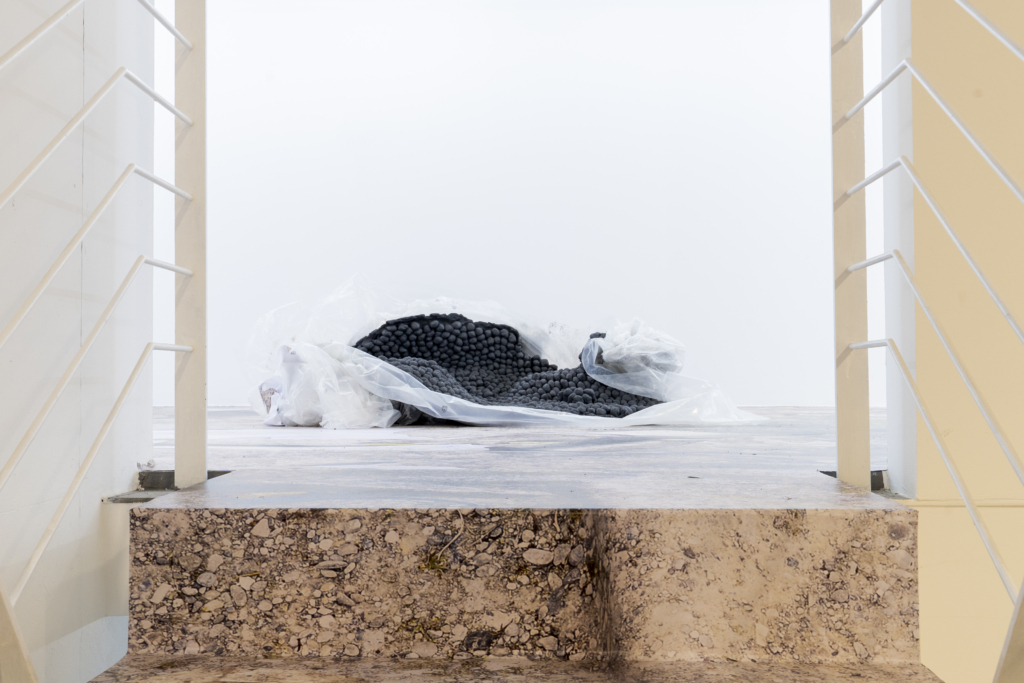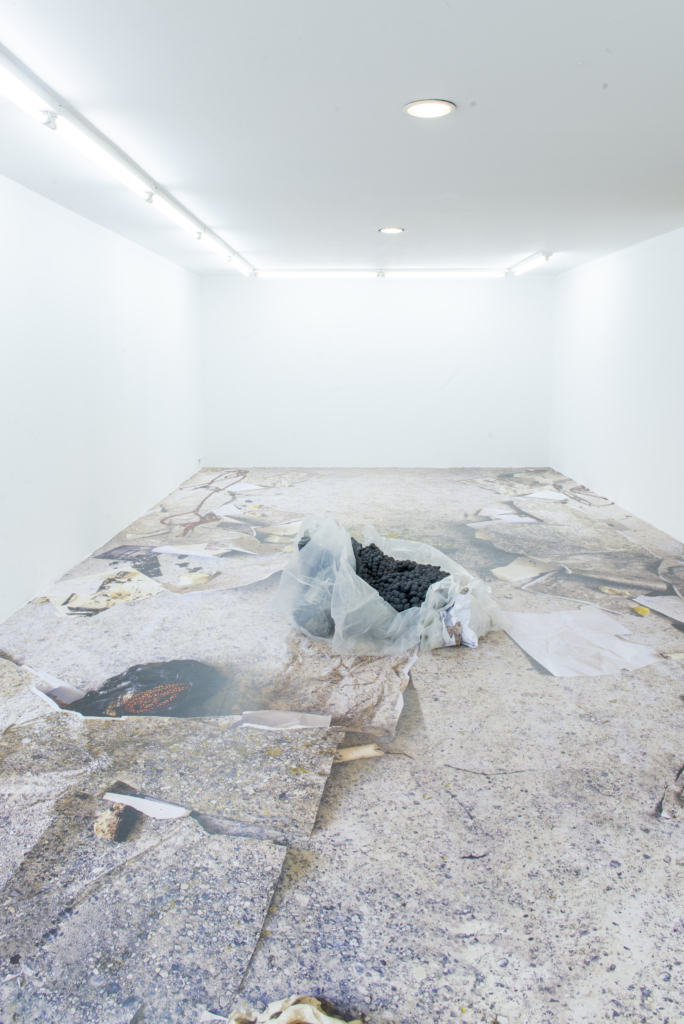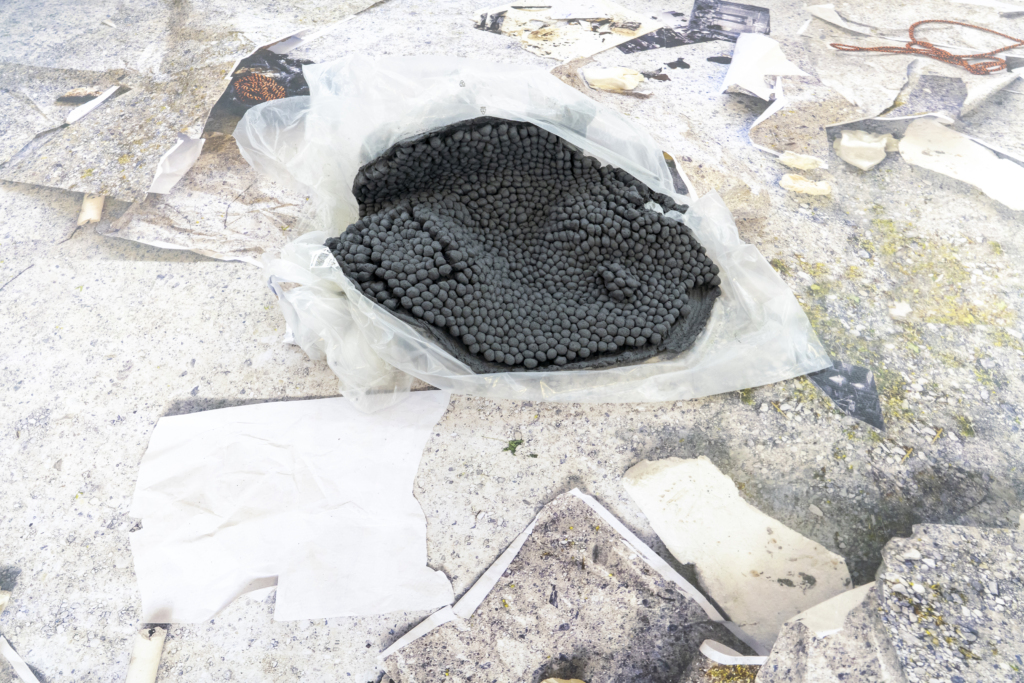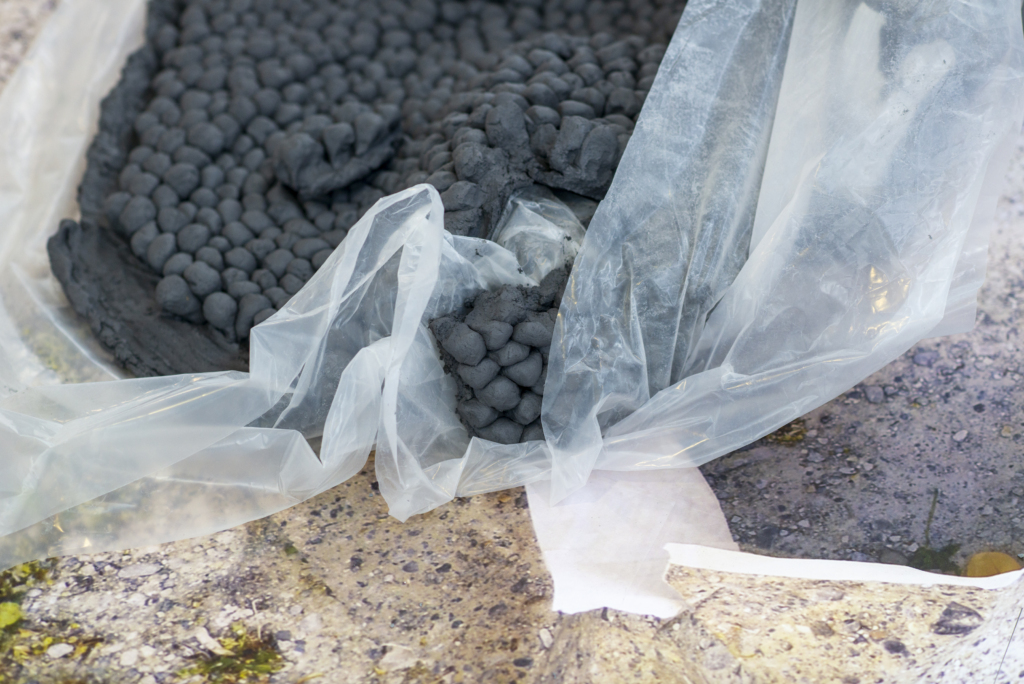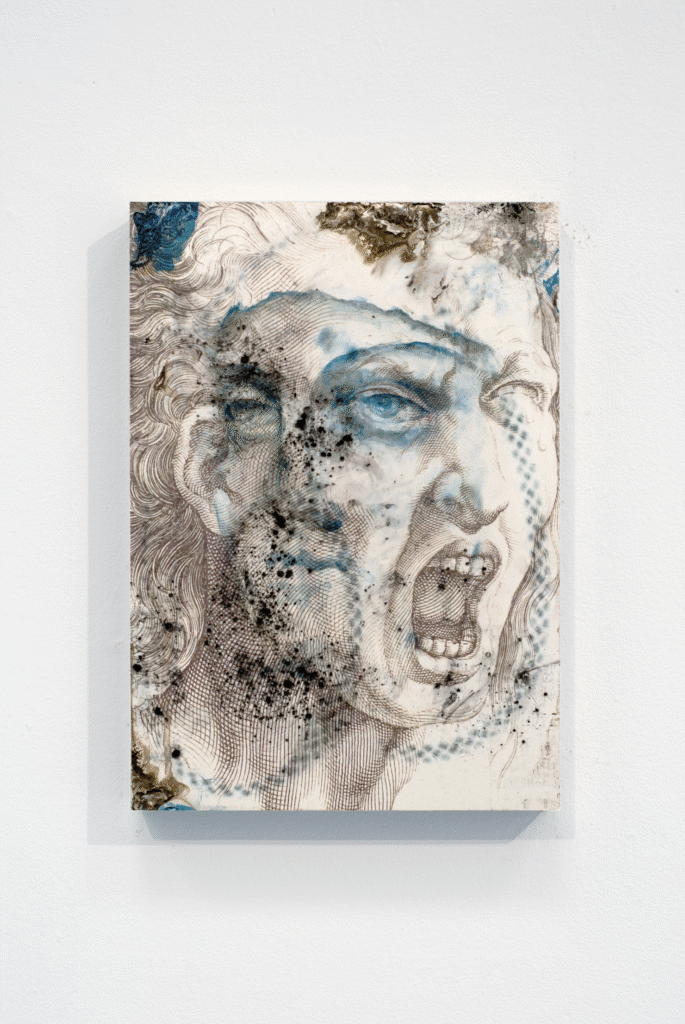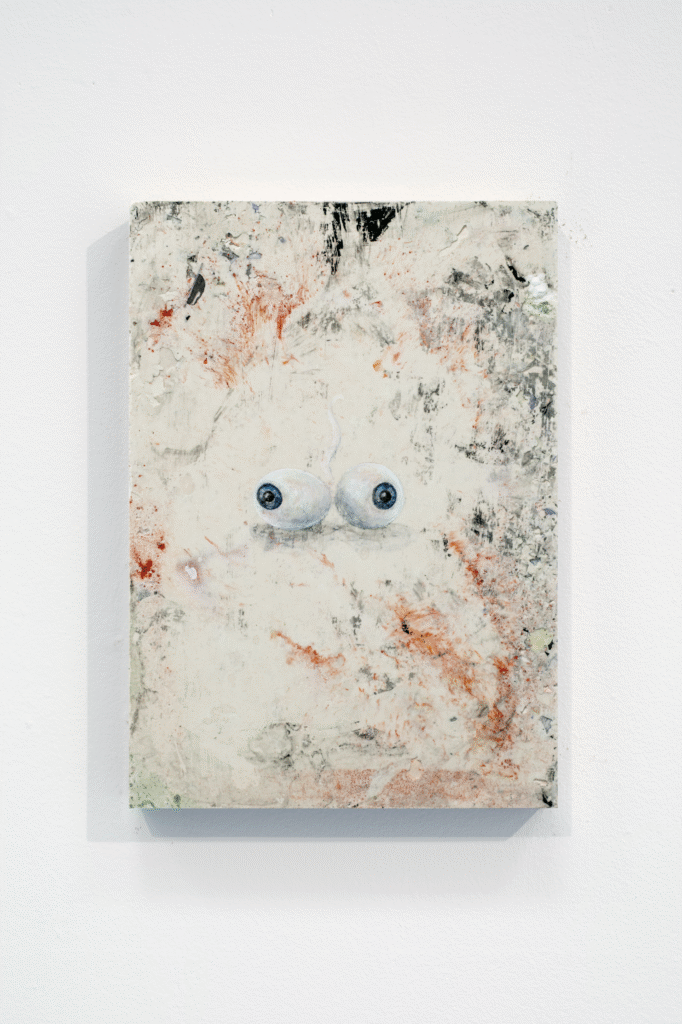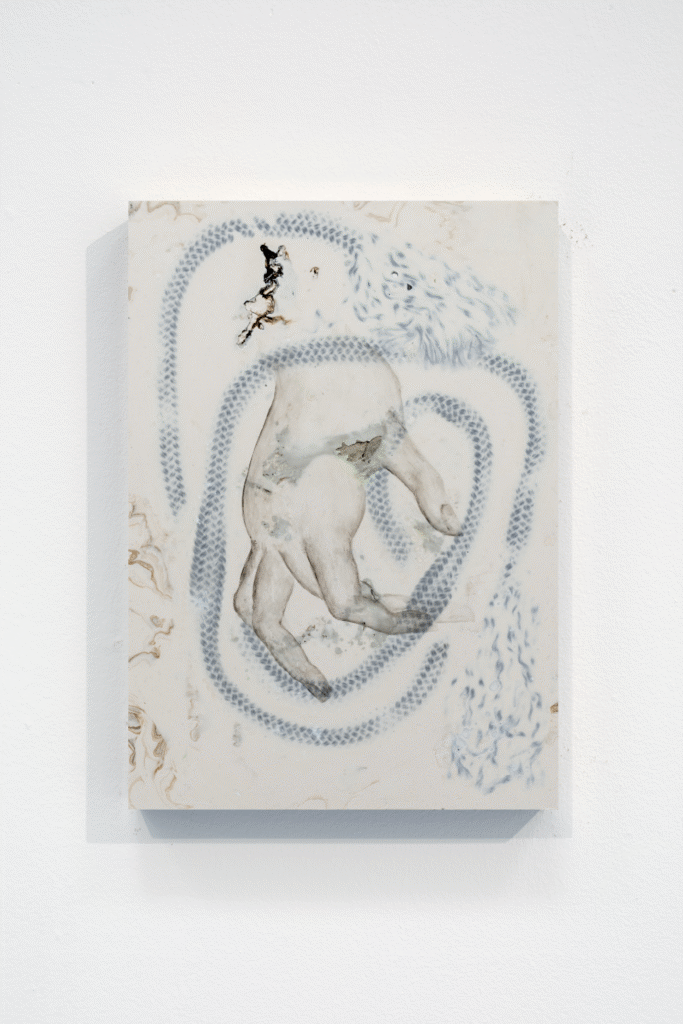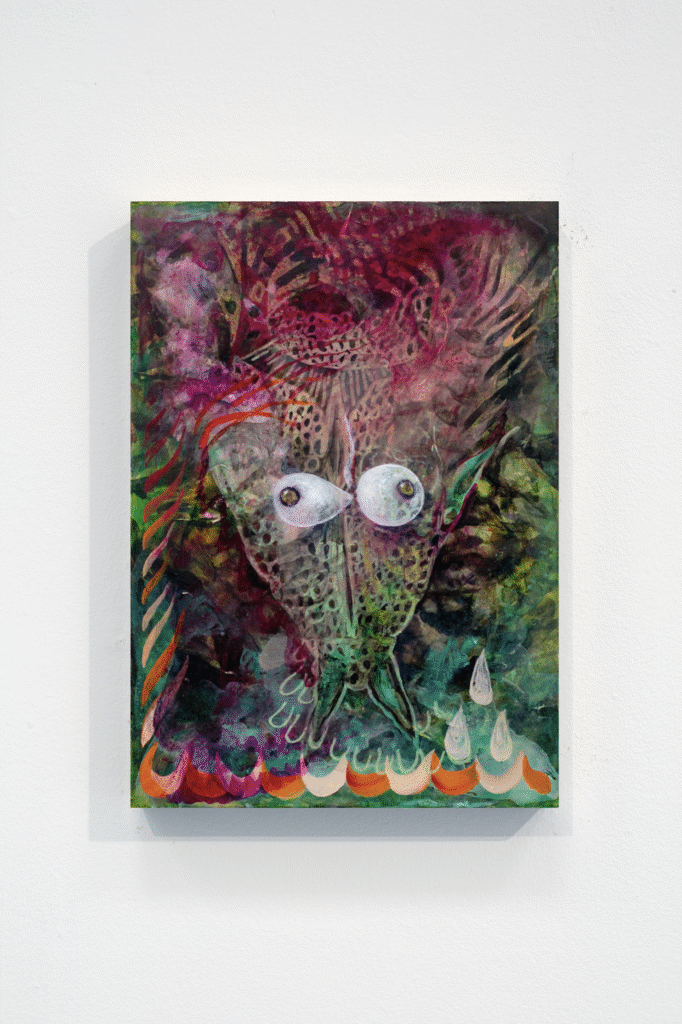PELES DUO
mess and memory
For Kunstverein Friedrichshafen, PELES DUO will focus on the place where they create – the artist studio. Another starting point for PELES DUO’s practice in 2025 – also the year in which they look back on 20 years of their career – is process. Both themes are explored in mess and memory, an exhibition created and expanded especially for the venue. An interior view of their studio fills the entrance to the Kunstverein. From the outside and from a distance, you can see the chaos and sheer abundance of an artist’s studio. The closer you get to the space, the larger the motif becomes. Suddenly you can see the small features, objects and textures of the place depicted. The imposing size and at the same time the ‘revelation’ of the intimate place of the two artists also changes the entrance to the Kunstverein: The wallpaper acts as a curtain through which visitors enter the exhibition itself.
mess and memory – the title of Peles Duo’s exhibition at Kunstverein Friedrichshafen – opens up a field of tension between disorder and inscription, between the ephemeral and the embedded. Mess stands for process, for that which eludes control – the studio, the imprint, the undecided. Memory, on the other hand, refers to repetition and archiving. Together, the two terms formulate a dialectic that precisely outlines the artistic practice of Peles Duo: their works are never purely documentation or deconstruction, but always both at once, a fusion of diverse artistic approaches.
The exhibition presents bodies of work that do not seek completion, but rather explore what lies in between – the unfinished and the trace. As a methodological point of departure, the principle of reproduction plays a central role: copying not as mere repetition but as a creative act that destabilizes the relationship between original and replica, between history and the present. The exhibition mess and memory does not take shape as a completed act, but as a palimpsest-like terrain – temporary, layered, and in motion.
Accordingly, Peles Duo presents a site-specific, multi-layered installation throughout the Kunstverein – a living archive of their work that unfolds across the entire exhibition space. The works move between painting, photography, sculpture, and architecture, between reproduction and original, between the visible and the fragmentary. The starting point of the exhibition is a large-format hanging paper work in the entrance area – a kind of visual threshold that welcomes visitors, leads them into the exhibition, and at the same time, obstructs immediate insight. This curtain can also be read as a recurring motif in the duo’s practice: a strategy of staging, a site of concealment and revelation. The central motif, taken from the work forms of love (Berlin, 2024), evokes an image of the sacred while simultaneously functioning as a fragment from another time and space. The wallpaper is not merely a surface but a membrane through which image and space enter into dialogue – the room wallpaper becomes a method of site-specific restaging, where earlier works reappear as echoes or quotations.
The tension between visibility and concealment, between intimacy and public staging, runs through the entire exhibition. The carpets in the main room – wall-mounted, ornamental, textile – also carry traces of another time and place. Their photographic templates originated during a coal fire procedure in the work the long sleep of amber (E-Werk Luckenwalde, 2021), in which industrial material history was interwoven with mythological references.
The floor of the first upper level, as well as the staircases, are covered with image-based wallpapers – photography here is transferred into a new, abstracted spatiality. The grid structure not only recalls archaeological excavations but also raises questions about the documentation and reconstruction of the past. Where does history begin, and how is it renegotiated through images? On the upper floor, visitors encounter an unfinished work, which began as part of the research for TIBISCVM (Art Encounters, Timișoara, 2019). An archaeological clay figurine, discovered on a construction site in Romania, points to ancient love rituals in which fire played a central role – both binding and destructive. This work exemplifies how Peles Duo interweaves narratives: from Roman poetry to the Ottoman history of Timișoara – everything can become material, is abstracted, layered, and transformed into a new legibility.
In the midst of the exhibition, the medium of painting also appears – as both a return and a departure: back to the origins of artistic practice, forward into an intimate, almost microscopic engagement with surface and meaning. Layers of pigment, Jesmonite, UV print, and paint transform the sculptural into flatness, shape gesture into line, and abstract image into structure.
At Kunstverein, the multifaceted work of Peles Duo unfolds as a constantly re-written constellation, one that does not follow a linear path but rather a rhizomatic one. Photographs, ceramics, UV prints, Jesmonite reliefs, wallpapers, textile surfaces, and digitally generated forms do not stand alone but enter into a temporary togetherness – a space that becomes a stage for memory, repetition, and transformation. At the heart of this exhibition is not the presentation of finished objects, but a visible thought process, a work in progress, which raises questions: When does a work begin? When does it end? What remains when something has been transformed, reworked, copied, or archived?
PELES DUO (formerly Peles Empire) is a collaboration between the artists Katharina Stöver (*1982 in Gießen, Germany) and Barbara Wolff (*1980 in Făgăraș, Romania). Strategies of optical flattening and deception, the transformation from 3D to 2D and back to 3D and, last but not least, the question of whether and when a work can be understood as a work of art and when a work can be understood as finished – these are some of the motifs that are some of the themes that Pele’s duo explores. More specifically their hybrid objects and installations made from photographic prints and plaster-based Jesmonite, become collectively produced in-between spaces.
In 2017, Pele’s Duo was represented at Skulptur Projekte, Münster. In the same year, they were also featured in the exhibition Produktion. Made in Germany Three at Sprengel Museum, Kestner Gesellschaft and Kunstverein Hannover. In 2021, the PELES DUO received a scholarship from the Peter Jacobi Foundation for Art and Design. Selected solo and group exhibitions in recent years include: intimacy with mortals (2022), Galerie Wentrup, Berlin (DE); you are fire, dressed in fire (2022), Kunstverein Pforzheim (DE); the other amber (2021), Galerie Johann Widauer, Innsbruck (AT); the long sleep of amber (2021), E-Werk Luckenwalde (DE); foam born (2021).
Curator: Marlene A. Schenk
